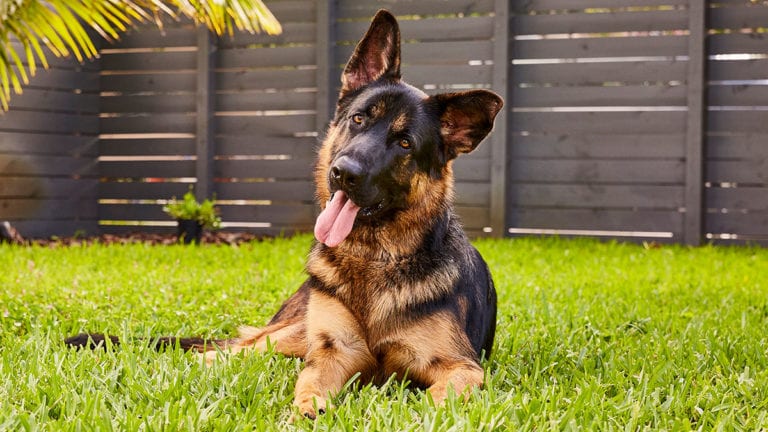Theories about the origin of the Pug have caused much debate over the years, some thinking the breed to have developed in the Far East, others thinking it developed in Europe. It is now generally accepted that the Pug originated in China, from where it spread to Japan and later to Europe. It is also highly probable that the short-nosed Pug, crossed with other longer-faced European breeds, lies behind many of the other shorter-headed breeds.
In China there has long been a breed of dog known as the Happa (sometimes spelled Ha-pa), which is similar to a smooth-coated Pekingese. Indeed, many people believe that the Happa may be the progenitor of the Pug. Shortmouthed dogs in China are known as Lo-sze, and although they may well have been known there as far back as 1115 BC, there is no record of them until 663 BC. The Lo-sze had clear features distinguishing it from the Pekingese: the muzzle was different, the coat was short and the ears were small and vineshaped. By 732 AD we read of a small short-faced dog, known as the Suchuan pai dog, that was among gifts sent from Korea to Japan.
The Name “Pug”
The word “Pai” came to be used as the name for this type of dog, and it is possible that to Western ears this name may have resembled the name now used in the West, “Pug.” In 1731 the word “pug” was defined in a dictionary as a nickname for a monkey or dog. Marmosets were popular as pets at that time, and the Pug’s squashedin face probably caused it to share the same name.
Another possibility is that the name originated from the Latin word pugnus, which means fist, as some people thought that the shape of the Pug’s face resembled a clenched fist. The word “pug” or “pugge” was also a term of endearment, though it may also be a derivation of “Puck,” conjuring up Shakespearean images of an impish face.
In some Continental countries, the Pug is still known by the rather quaint name “Mops,” which comes from the Dutch word Mopshund. The verb mopperen means to grumble, and the name “Mops” may well have come into use because of the breed’s wrinkled, frowning appearance.
In France the name used was Carlin, after a famous 18th century actor who was renowned for his role as Harlequin. It is thought that the name Carlin was, and still is, used for the Pug in France because of the breed’s black mask.
The Breed in China
In China, dogs were frequently treated almost like royalty, even with titles of rank being bestowed upon some of them. They were carefully guarded, and many had servants employed to care for them and to see that they enjoyed every comfort. Understandably, the Pug was owned primarily by those within Court circles or from the ruling classes of the country, and often the dogs were treated primarily as ornaments.
The Pug enjoyed great popularity in China at least until the 12th century, but from then on interest appeared to wane and there was little mention of the breed until early in the 16th century.
The Pug Comes West
It is now generally accepted that the Pug originated in the Orient and eventually appeared in Europe, much resembling the breed known there today. Many people believe that the Pug descended from the Mastiff breeds, with ancestors such as the fighting dogs of ancient Greece. Certainly in Europe there were some extraordinary crossmatings in years gone by—with the Bulldog, among others—but in China the aim was certainly to breed dogs as true to type as possible. It is these that formed a firm foundation for today’s Pug.
Before reaching the West, the Pug was popular throughout Asia and it seems to have wended its way to Europe via Russia. The aunt of Russia’s Catherine the Great was reputed to have kept a score of Pugs and the same number of parrots in a single room. Perhaps equally fascinating is the picture conjured up in our minds when we learn that several of this Princess’s dogs always accompanied her to church.
The Pug has been very much connected with Holland, for it has been very popular there, though in the early years they were known as “Dutch Mastiffs.” This name may help explain the confusion that arose over the breed’s origin. Pugs from Holland were certainly destined to have a great influence on the spread of the breed throughout Europe.
The Dutch East India Company played an important role in trade with the Orient. It is clear that on many of the ships’ return journeys, both Pugs and Pekingese were brought back as precious cargo. It is a Pug that is reputed to have saved the life of William the Silent when, at Hermigny, around 1572, the Prince was under surprise attack from Spanish troops. When the Pug heard the noise of the troops he made a great noise, scratching and crying, and leapt upon the face of the Prince to awaken him. From then on, the Prince always kept such a dog, and, subsequently, Pugs were the favorite breed at the Dutch Court.
Posted by: Chewy Editorial
Featured Image: Maryna Vechirka/Shutterstock.com
Share:









